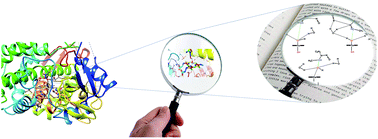Water biocatalytic effect attenuates cytochrome P450-mediated carcinogenicity of diethylnitrosamine: A computational insight†
Abstract
The mechanism-based mutagenicity and carcinogenicity of diethylnitrosamine (DEN) are believed to act through interactions with cytochrome P450 (P450) enzymes. DFT calculations to explore the conceivable mechanisms underlying the reaction of P450 with DEN with and without water as a biocatalyst were performed. The results shed light on the biocatalytic role of water in lowering the H-abstraction energy barriers because of the electrostatic effect driven by hydrogen bonding. Our DFT analysis revealed how metabolites are formed in the dealkylation (toxification) and denitrosation (detoxification) pathways. Also, our findings uncovered the active position of DEN vulnerable to P450 interactions. Two factors control the toxification and detoxification rates: the stability of denitrosation products and the HS rebound barrier of the α-pathway. Thus, water biocatalytic attenuation of DEN carcinogenicity was attained by stabilizing denitrosation products and slowing the α-HS rebound process. Docking and MD simulations were performed to assess the binding modes of DEN to P450's active site and to inspect the denitrosation and dealkylation processes, respectively.

- This article is part of the themed collections: Biocatalysis: A cross-journal collection and Mechanistic, computational & physical organic chemistry in OBC


 Please wait while we load your content...
Please wait while we load your content...